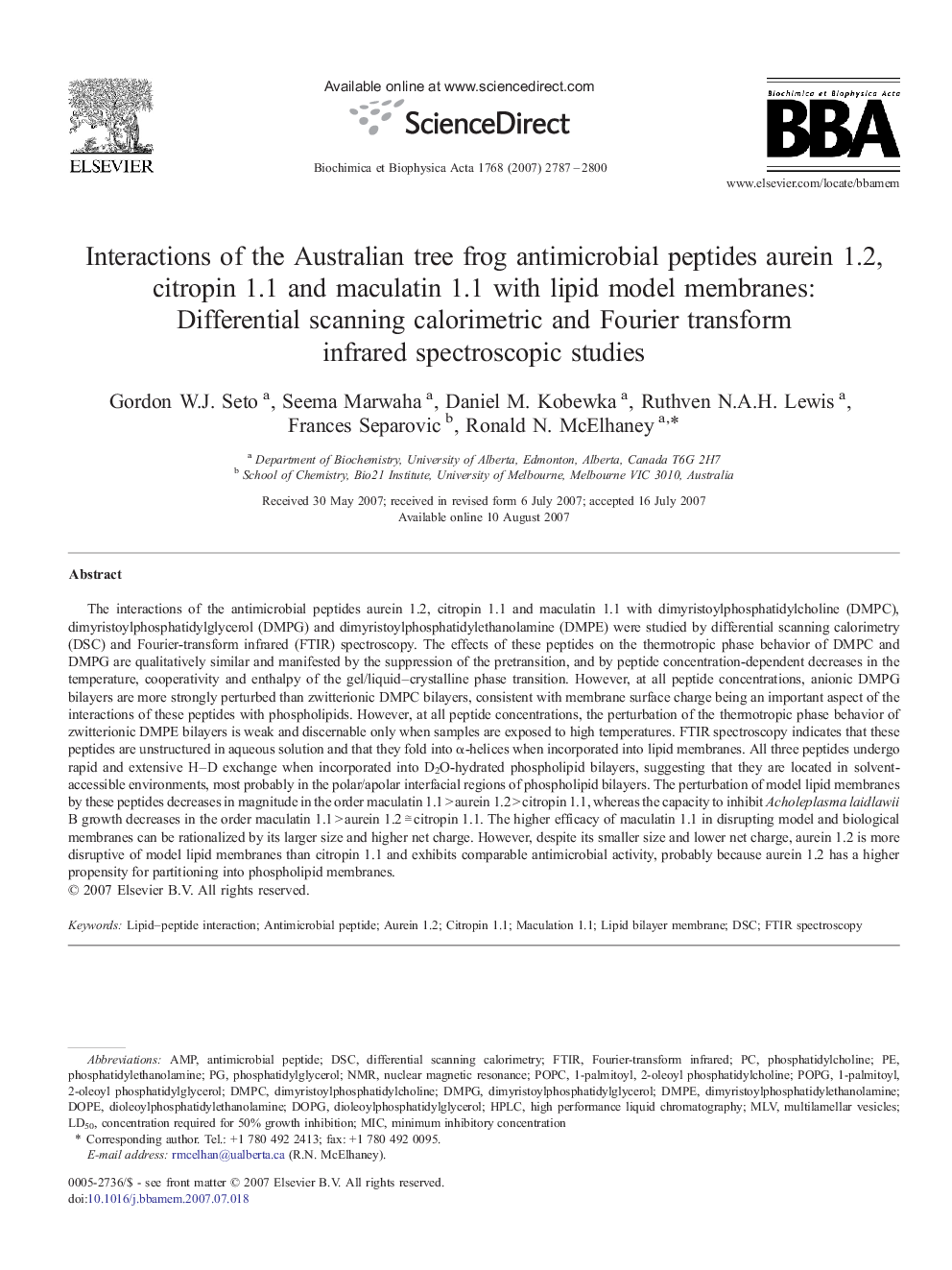| کد مقاله | کد نشریه | سال انتشار | مقاله انگلیسی | نسخه تمام متن |
|---|---|---|---|---|
| 1945636 | 1053270 | 2007 | 14 صفحه PDF | دانلود رایگان |

The interactions of the antimicrobial peptides aurein 1.2, citropin 1.1 and maculatin 1.1 with dimyristoylphosphatidylcholine (DMPC), dimyristoylphosphatidylglycerol (DMPG) and dimyristoylphosphatidylethanolamine (DMPE) were studied by differential scanning calorimetry (DSC) and Fourier-transform infrared (FTIR) spectroscopy. The effects of these peptides on the thermotropic phase behavior of DMPC and DMPG are qualitatively similar and manifested by the suppression of the pretransition, and by peptide concentration-dependent decreases in the temperature, cooperativity and enthalpy of the gel/liquid–crystalline phase transition. However, at all peptide concentrations, anionic DMPG bilayers are more strongly perturbed than zwitterionic DMPC bilayers, consistent with membrane surface charge being an important aspect of the interactions of these peptides with phospholipids. However, at all peptide concentrations, the perturbation of the thermotropic phase behavior of zwitterionic DMPE bilayers is weak and discernable only when samples are exposed to high temperatures. FTIR spectroscopy indicates that these peptides are unstructured in aqueous solution and that they fold into α-helices when incorporated into lipid membranes. All three peptides undergo rapid and extensive H–D exchange when incorporated into D2O-hydrated phospholipid bilayers, suggesting that they are located in solvent-accessible environments, most probably in the polar/apolar interfacial regions of phospholipid bilayers. The perturbation of model lipid membranes by these peptides decreases in magnitude in the order maculatin 1.1 > aurein 1.2 > citropin 1.1, whereas the capacity to inhibit Acholeplasma laidlawii B growth decreases in the order maculatin 1.1 > aurein 1.2 ≅ citropin 1.1. The higher efficacy of maculatin 1.1 in disrupting model and biological membranes can be rationalized by its larger size and higher net charge. However, despite its smaller size and lower net charge, aurein 1.2 is more disruptive of model lipid membranes than citropin 1.1 and exhibits comparable antimicrobial activity, probably because aurein 1.2 has a higher propensity for partitioning into phospholipid membranes.
Journal: Biochimica et Biophysica Acta (BBA) - Biomembranes - Volume 1768, Issue 11, November 2007, Pages 2787–2800